Fosdyk's account
Fosdyk's papers say that he had to leave the United States quickly due to some misfortunes, and being a friend to Captain Benjamin Briggs, he convinced the captain to allow him on board. While at sea, Captain Briggs had a carpenter build a high special deck on the quarterdeck for his young daughter and wife, that would allow them a better view while at sea.
According to Fosdyk's account, which is set down in the manner of a diary, one day Captain Briggs engaged in a lighthearted dispute with the mate about how well a man could swim with his clothes on. Captain Briggs and the mate then exchanged clothes, jumped overboard, and began swimming around the vessel. Captain Briggs's wife and child, Fosdyk, and some other members of the crew stepped up onto the specially built deck for a better view of the fun.
Suddenly, one swimming crew member screamed in agony. Looking around, they saw that he was being attacked by a shark, and he quickly disappeared under the water. The remaining members of the crew also ran up onto the specially built deck to better see what was happening, and it promptly collapsed, tossing them all into the sea and leaving no one on board the Mary Celeste.
What followed, by Fosdyk's account, was a splashing confusion, with sharks attacking all those in the water, with the exception of Fosdyk, who by accident had landed on top of the shattered piece of deck. The Mary Celeste floated away from their location and by the time the shark attack was over, Fosdyk was the only survivor, and he was unable to reach the ship. He floated for several days, thirsting for water and suffering from exposure, finally washing ashore on the coast of Africa. Fearful of retribution due to the outlandish details of his story, he never revealed the incident to anyone. It only came to light after his death because Linford went public with it.

USS Indianapolis (CL/CA-35) was a Portland-class heavy cruiser of the United States Navy, named for the city of Indianapolis, Indiana. Launched in 1931, it was the flagship for the commander of Scouting Force 1 for eight years, then flagship for Admiral Raymond Spruance from 1943 to 1945 while he commanded the Fifth Fleet in battles across the Central Pacific during World War II.

Mary Celeste was a Canadian built, American-registered merchant brigantine that was discovered adrift and deserted in the Atlantic Ocean off the Azorean islands on December 4, 1872. The Canadian brigantine Dei Gratia found her in a dishevelled but seaworthy condition under partial sail and with her lifeboat missing. The last entry in her log was dated ten days earlier. She had left New York City for Genoa on November 7 and was still amply provisioned when found. Her cargo of alcohol was intact, and the captain's and crew's personal belongings were undisturbed. None of those who had been on board were ever seen or heard from again.

A ghost ship, also known as a phantom ship, is a vessel with no living crew aboard; it may be a fictional ghostly vessel, such as the Flying Dutchman, or a physical derelict found adrift with its crew missing or dead, like the Mary Celeste. The term is sometimes used for ships that have been decommissioned but not yet scrapped, as well as drifting boats that have been found after breaking loose of their ropes and being carried away by the wind or the waves.

Benjamin Spooner Briggs was an experienced American seaman and master mariner. He was the captain of the merchant ship Mary Celeste, which was discovered unmanned and drifting in the Atlantic Ocean midway between the Azores and the coast of Portugal on December 4, 1872. The lifeboat was missing, yet the Mary Celeste was still under sail. Briggs, his wife Sarah and their two-year-old daughter Sophia Matilda were never found and were presumed lost, along with the crew of Mary Celeste.

HMS Birkenhead, also referred to as HM Troopship Birkenhead or Steam Frigate Birkenhead, was one of the first iron-hulled ships built for the Royal Navy. She was designed as a steam frigate, but was converted to a troopship before being commissioned.
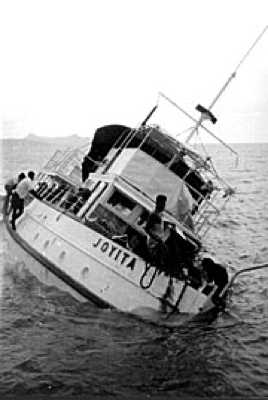
MV Joyita was an American merchant vessel from which 25 passengers and crew mysteriously disappeared in the South Pacific in October 1955. She was found adrift with no one aboard.
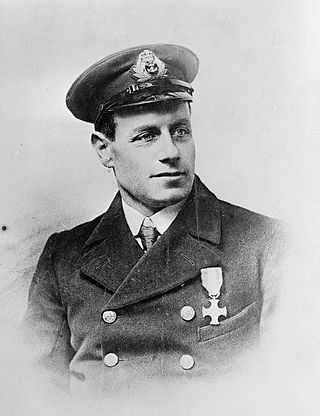
Thomas Crisp VC, DSC, RNR was an English sailor and posthumous recipient of the Victoria Cross. Crisp, in civilian life a commercial fisherman operating from Lowestoft in Suffolk, earned his award after being killed during the defence of his vessel, the armed naval smack Nelson, in the North Sea against an attack from a German submarine in 1917.

William Henry "Bully" Hayes was a notorious American ship's captain who engaged in blackbirding in the 1860s and 1870s.
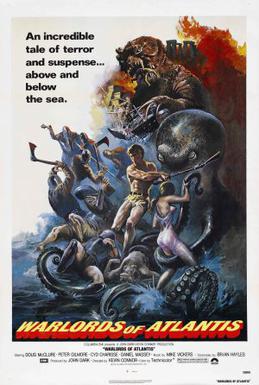
Warlords of Atlantis is a 1978 British adventure science fiction film directed by Kevin Connor and starring Doug McClure, Peter Gilmore, Shane Rimmer, and Lea Brodie. The plot concerns a trip to the lost world of Atlantis. The screenplay was by Brian Hayles. It was filmed in colour with monaural sound and English dialogue, and runs for 96 minutes. Warlords of Atlantis received a Motion Picture Association of America (MPAA) rating of PG. It was novelised by Paul Victor.
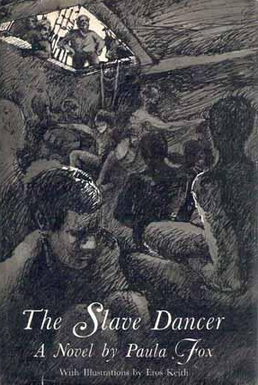
The Slave Dancer is a historical novel written by Paula Fox and published in 1973. It tells the story of a boy called Jessie Bollier who witnessed first-hand the savagery of the Atlantic slave trade. The book not only includes a historical account, but it also touches upon the emotional conflicts felt by those involved in transporting the slaves from Africa to other parts of the world. It tells the story of a thirteen-year-old boy, Jessie Bollier, who is put in a position which allows him to see the African slave trade in person. Jessie is captured from his New Orleans home and brought to an American ship. There he is forced to play the fife in order to keep the other slaves dancing, and thus strong when they arrive at their destination. The book received the Newbery Medal in 1974.

"J. Habakuk Jephson's Statement" is an 1884 short story by Arthur Conan Doyle. It is in the form of a first-person testimony by a survivor of the Marie Celeste, a fictionalised version of the Mary Celeste, a ship found mysteriously abandoned and adrift in the Atlantic Ocean in 1872. Doyle's story was published anonymously in the January 1884 issue of The Cornhill Magazine.

The Trench is a 1999 science fiction horror novel by American author Steve Alten. It is the sequel to Meg: A Novel of Deep Terror and the second book in the MEG series. The book continues the adventure of Jonas Taylor, a paleobiologist studying the megalodon, who now discovers another prehistoric monster, Kronosaurus, also thought to have been extinct. A sequel titled Meg: Primal Waters was released in 2004.
R.P. Resor was a tanker ship built in 1936 by the Federal Shipbuilding and Drydock Company of Kearny, New Jersey for the Standard Oil Company. She was torpedoed by the German U-boat U-578 on 28 February 1942 and later sank.
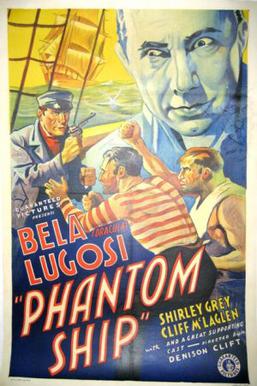
The Mystery of the Mary Celeste is a 1935 British mystery film directed by Denison Clift and starring Béla Lugosi, Shirley Grey and Arthur Margetson. It is one of the early films from Hammer Film Productions.

Dr. David Livesey is a fictional character from the 1883 novel Treasure Island by Robert Louis Stevenson. As well as doctor, he is a magistrate, an important man in the rural society of southwest England, where the story opens; his social position is marked by his always wearing a white wig—even in the harsh conditions of the island on which the adventure takes place.

RMS Titanic sank in the early morning hours of 15 April 1912 in the North Atlantic Ocean, four days into her maiden voyage from Southampton to New York City. The largest ocean liner in service at the time, Titanic had an estimated 2,224 people on board when she struck an iceberg at around 23:40 on Sunday, 14 April 1912. Her sinking two hours and forty minutes later at 02:20 ship's time on Monday, 15 April, resulted in the deaths of more than 1,500 people, making it one of the deadliest peacetime maritime disasters in history.

The Fitzroy was a steel-hulled steamship built in 1912 at Old Kilpatrick, Scotland in 1912. Thirty-one people were killed when Fitzroy capsized in a gale whilst carrying a general cargo between Coffs Harbour and Sydney off Cape Hawke, New South Wales on 26 June 1921.

Bluebelle was a 60-foot (18 m) twin-masted sailing ketch based out of Fort Lauderdale, Florida. The ship was scuttled following an act of mass murder by the ship's captain, Julian Harvey, on November 12, 1961. Harvey died by suicide on November 17 within hours of receiving news that 11-year-old Terry Jo Duperrault had survived the scuttling. She had been rescued at sea three and a half days after the incident, having drifted upon a small cork dinghy without food, water, or shelter for approximately 82 hours.
"The Heathen" is a short story by the American writer Jack London. It was first published in Everybody's Magazine in August 1910, and later included in the collection of stories by London, The Strength of the Strong, published by Macmillan in 1914.
















